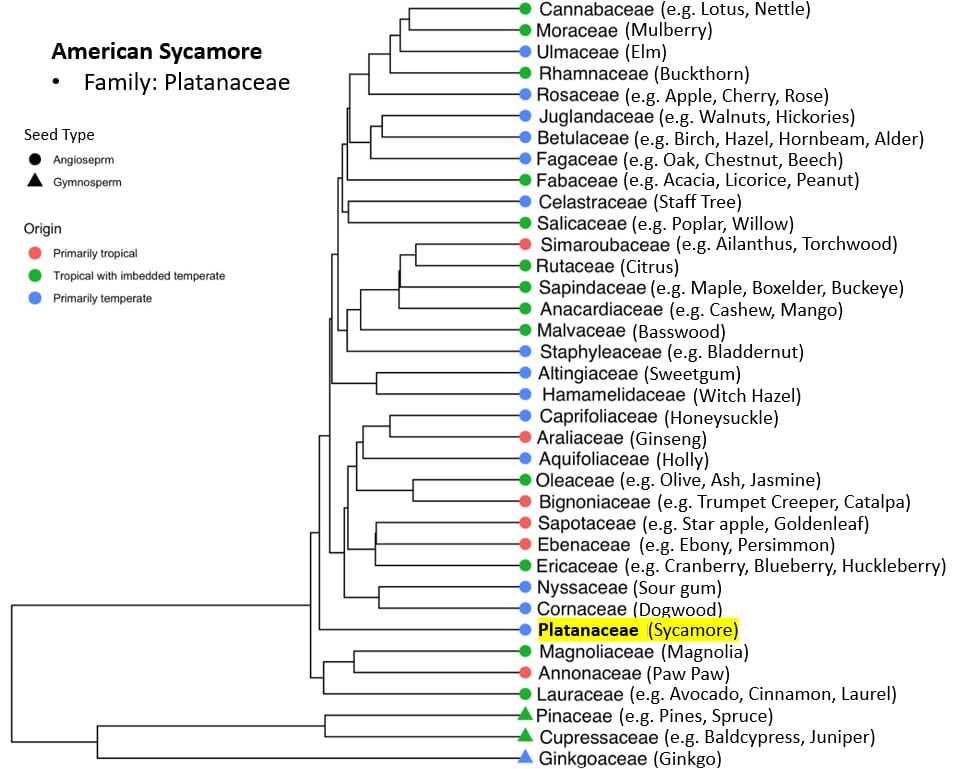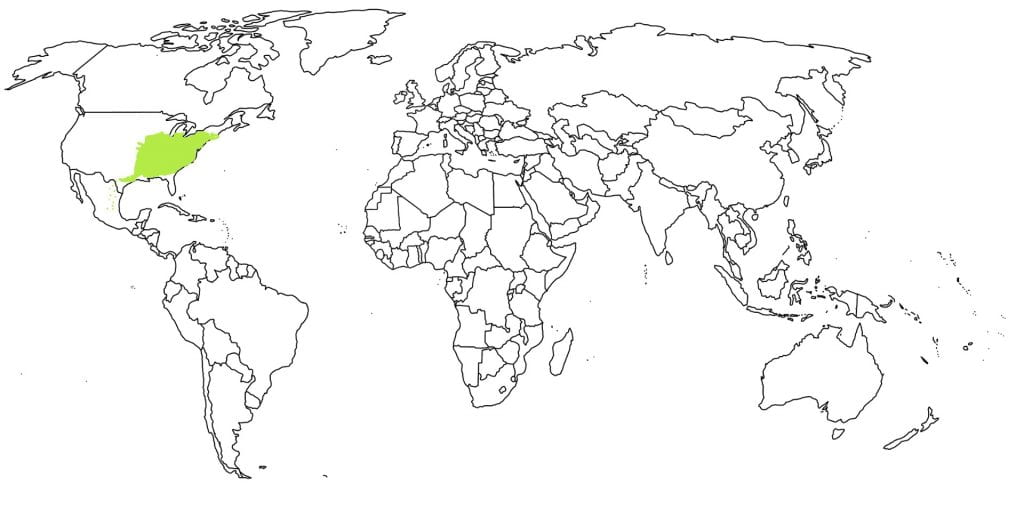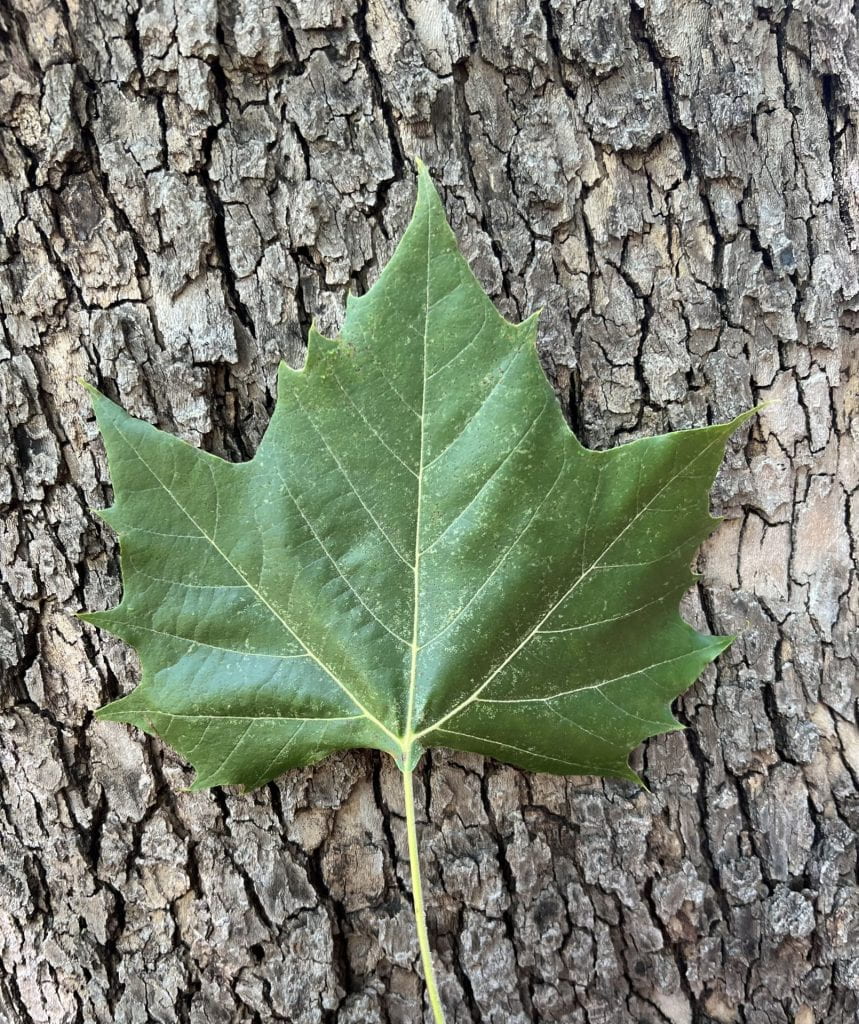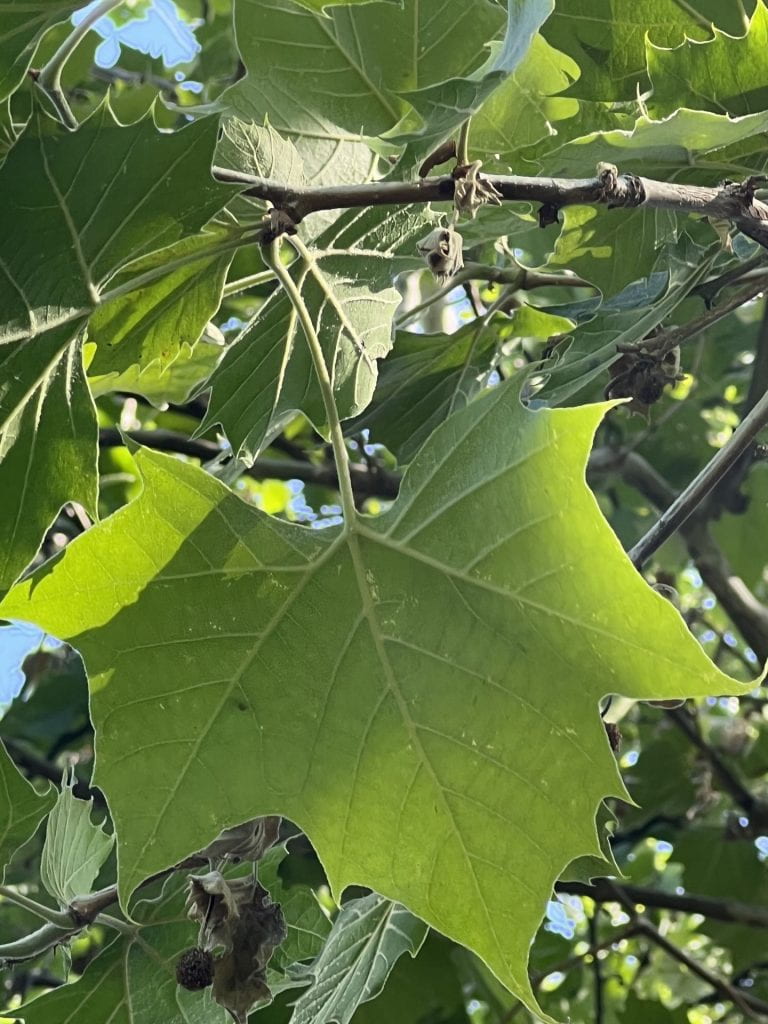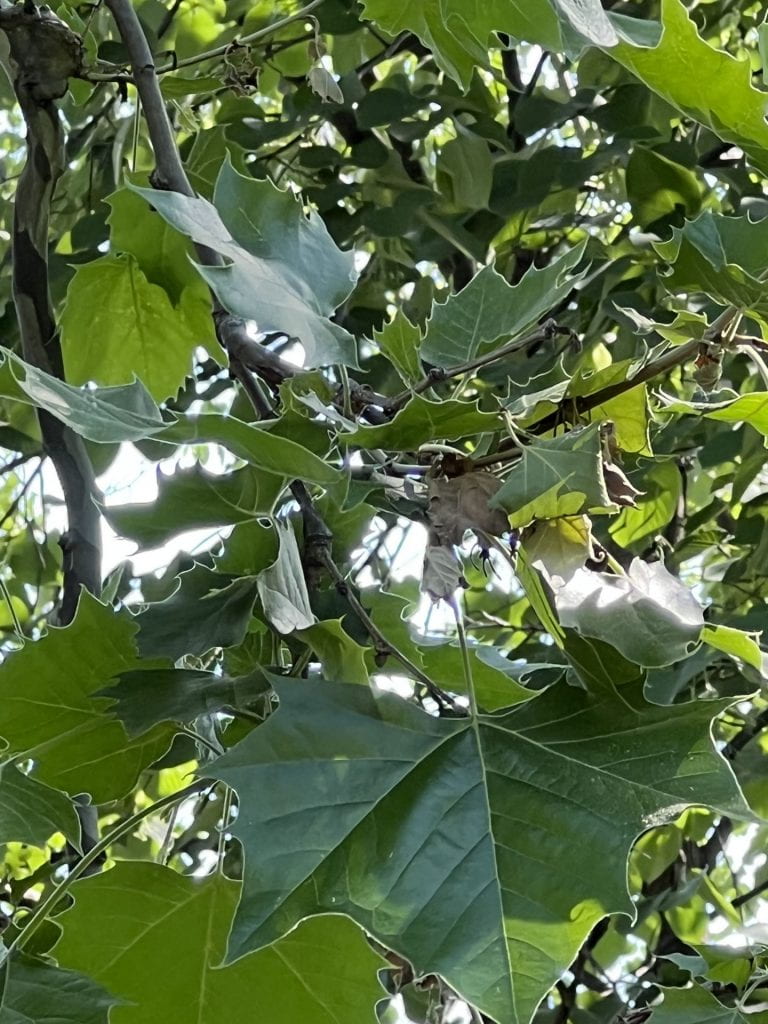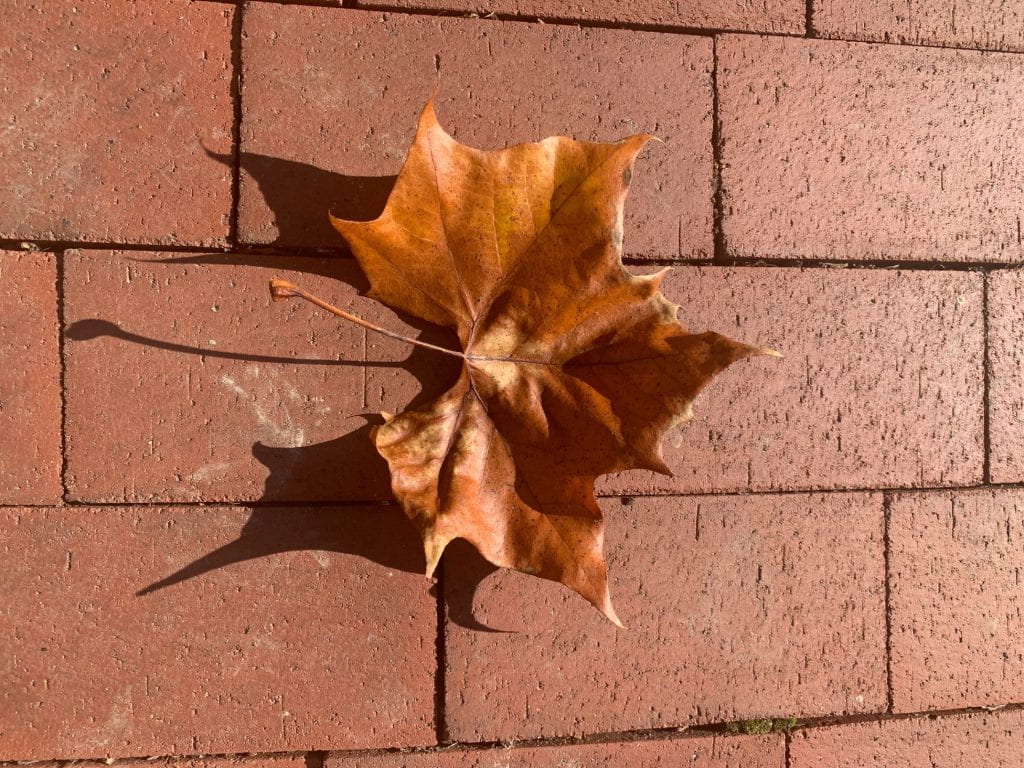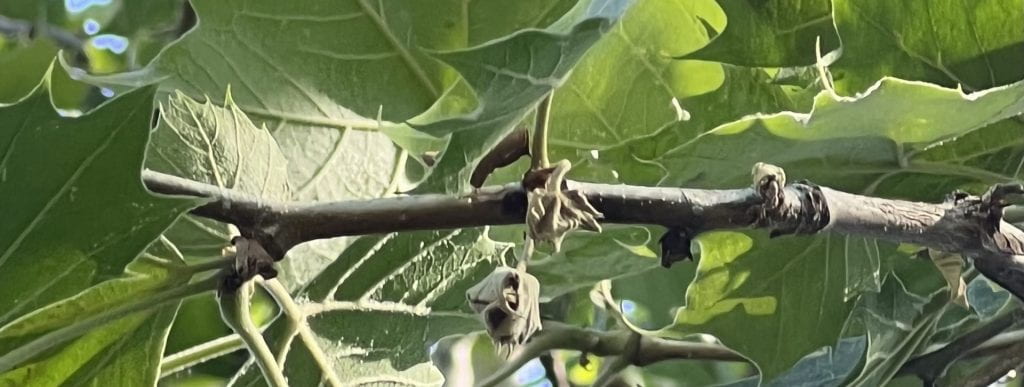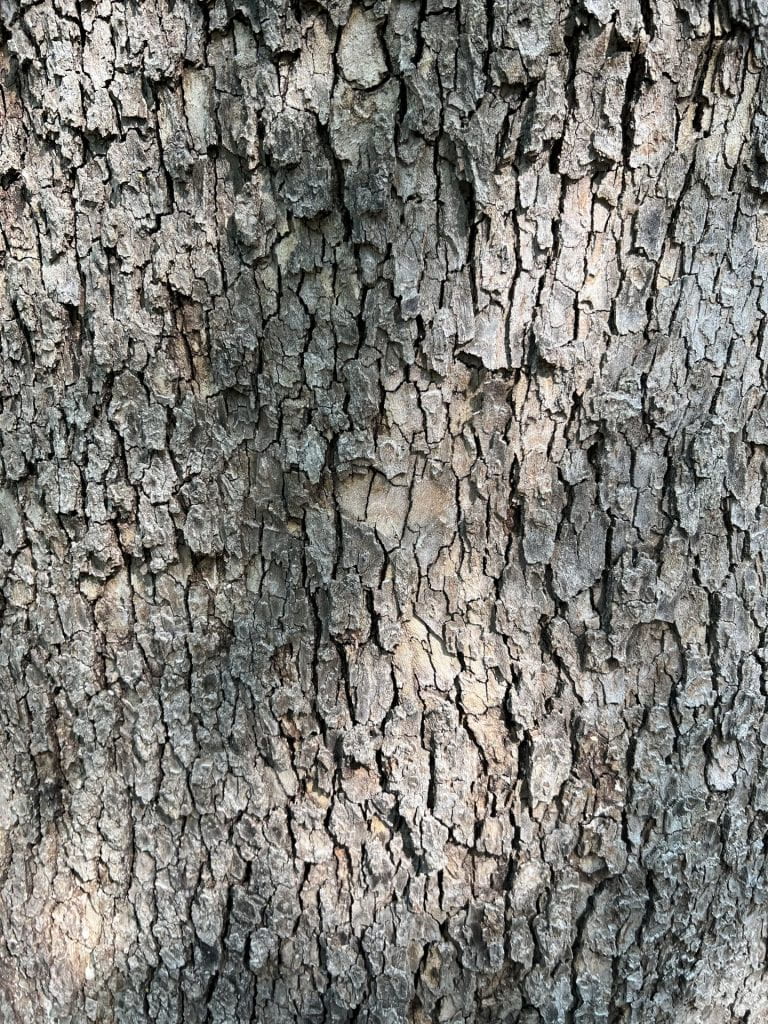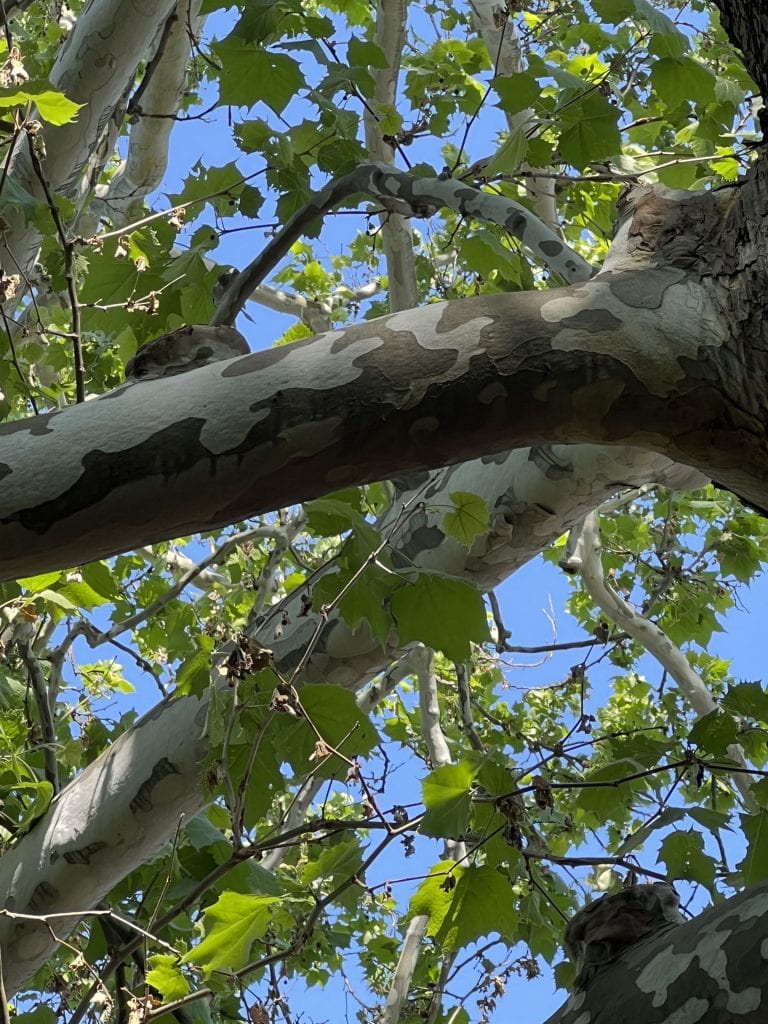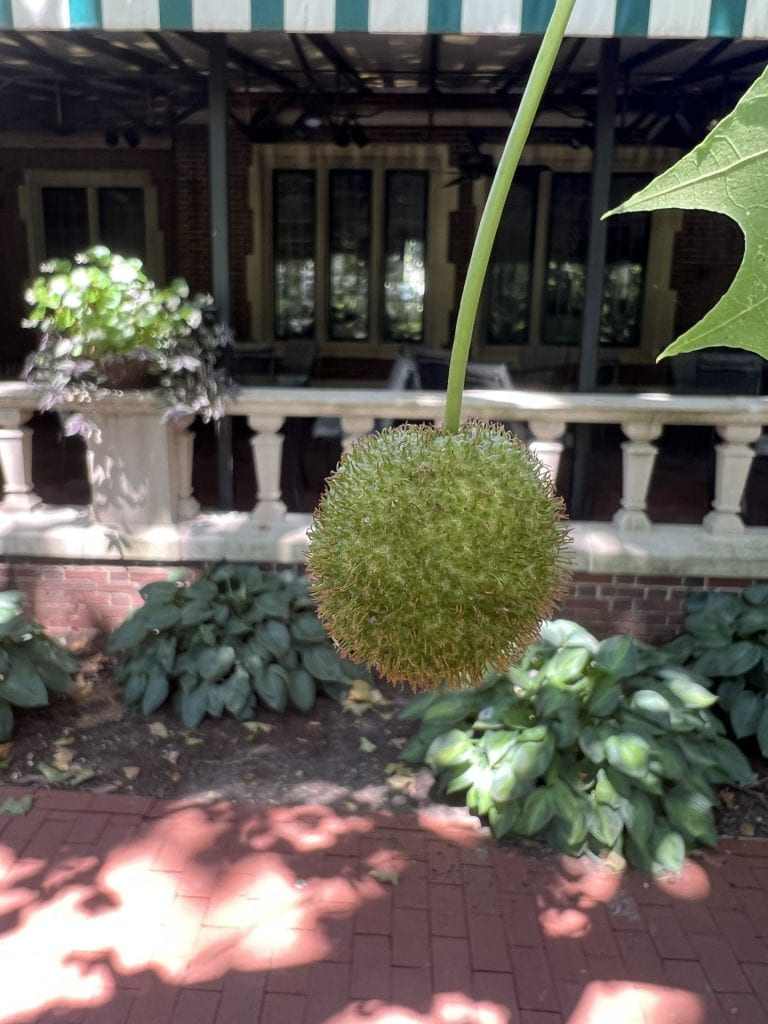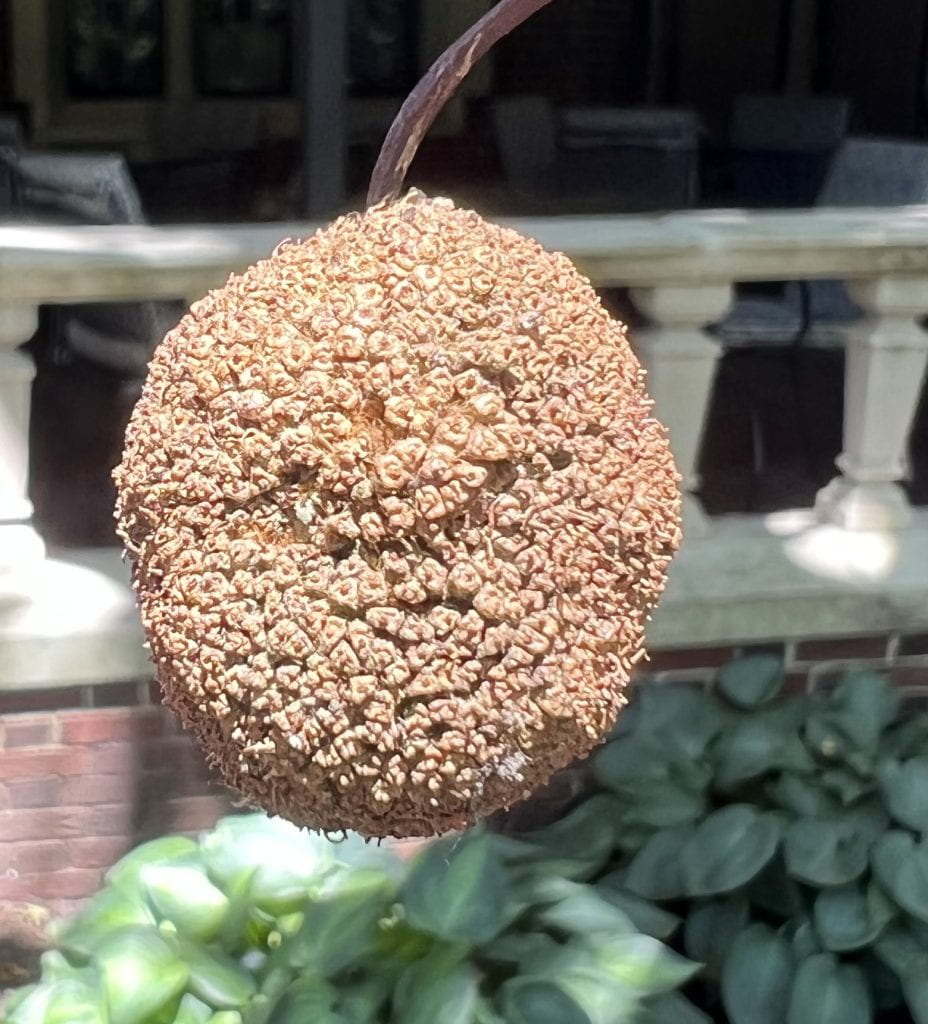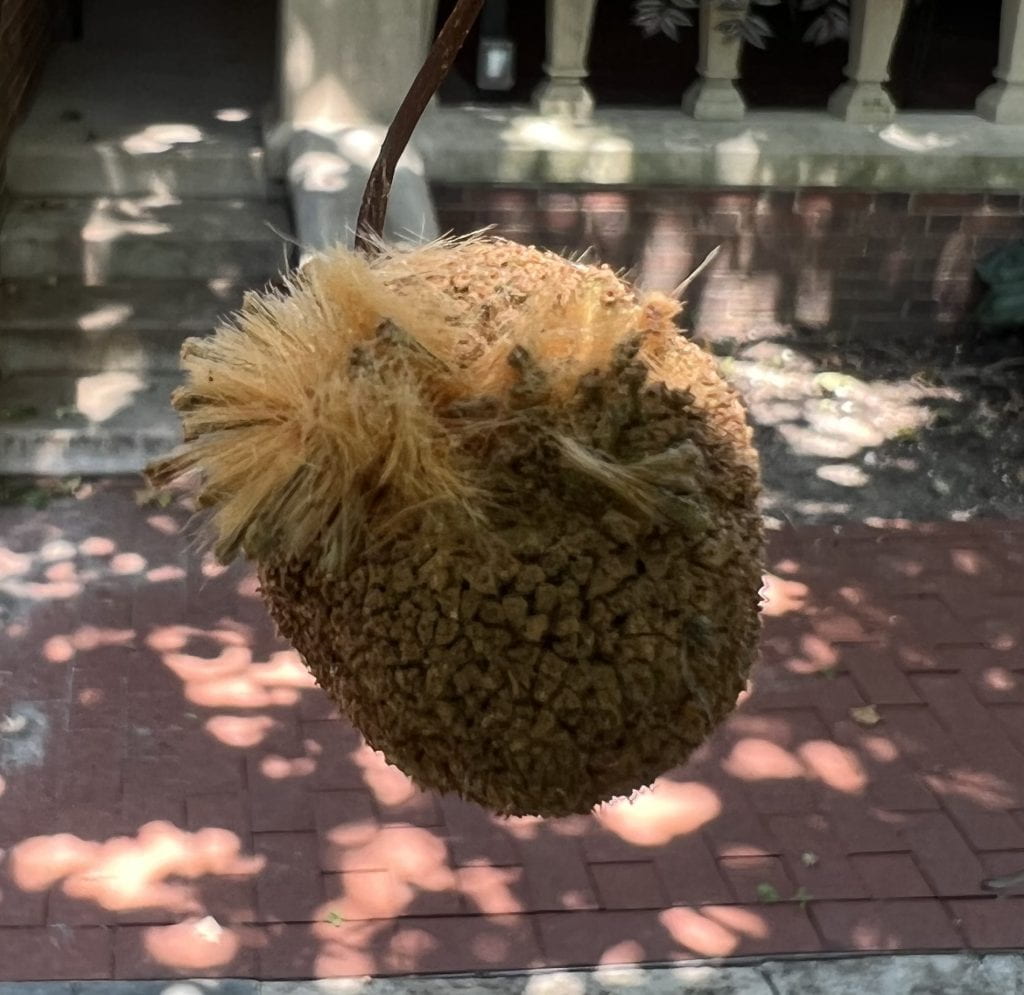American Sycamore
Arbor Walk #60, Treekeeper ID #5449
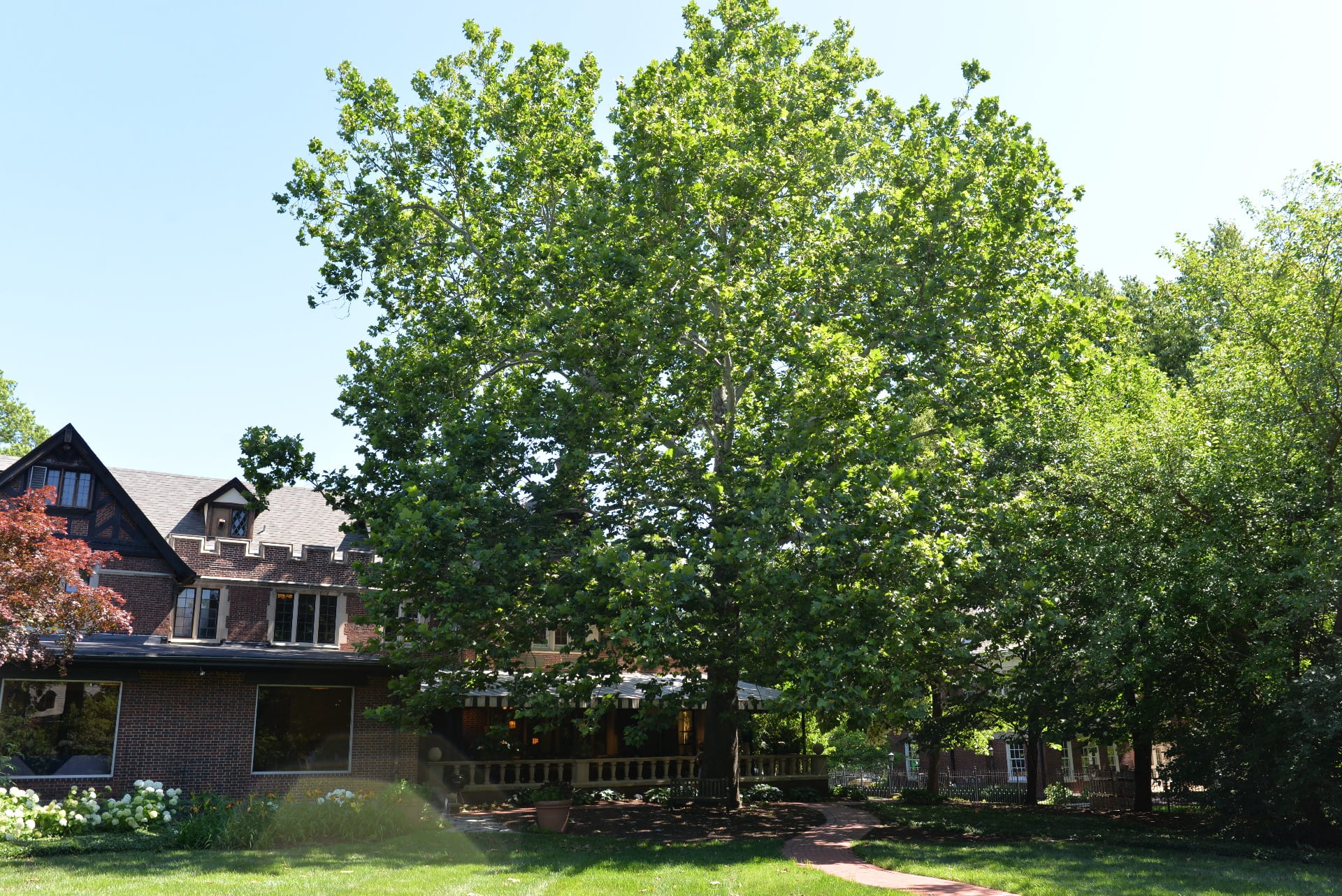
The Sycamore is regarded as one of the largest trees native to eastern North America, and was historically prized by Native Americans for the construction of dugout canoes. Ecologically, they are early colonizers to newly available habitat, and support animal shelters as they mature.
The American Sycamore typically reaches heights of 75-100 feet but are known to reach 150 feet plus in their ideal environmental conditions, which include flood plains and stream banks. The Sycamore is easily identified at a distance from its brown outer bark which exfoliates irregularly to reveal a distinctive white inner bark. The Sycamore leaf is easy to mistake for the Sugar Maple leaf. For example, the Sycamore leaf was accidentally depicted on the Canadian penny instead of their iconic Sugar Maple leaf that is present on the Canadian flag.

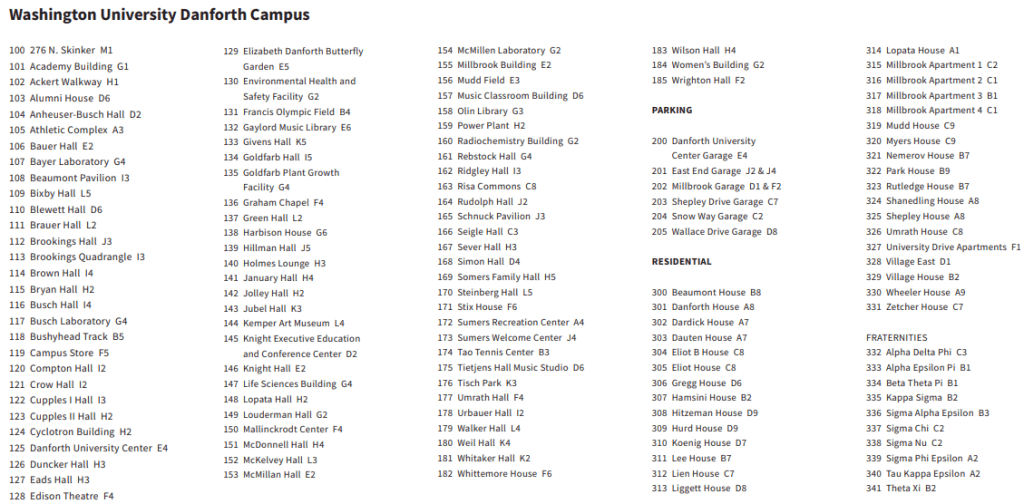
GPS Coordinates
N/A
Percent Concrete
N/A
Distance to Buildings
| Year | Close Building #1 | Close Building #2 | Close Building #3 |
|---|---|---|---|
| 2020 | Whittemore House, 3.49 m | Stix International House, 52.25 m | Harbison House, 51.83 m |
Distance to Other Species
| Year | Close Species #1 | Close Species # 2 | Close Species # 3 |
|---|---|---|---|
| 2020 | American Linden, 11.76 m | American Linden, 12.52 m | American Linden, 12.56 m |
Standard Measurements
| Year | Height (m) | DBH (cm) | Crown Diameter N-S (m) | Crown Diameter E-W (m) | Average Crown Diameter (m) |
|---|---|---|---|---|---|
| 2020 | 26.6686 | 99.04 | 21.25 | 20.78 | 21.02 |
| 2023 | 32.83 | 99.7 | 13.53 | 22.52 | 18.025 |
Nests and Pests
| Year | Description |
|---|---|
| 2020 | Lichen, algae, moss, and mildew on the trunk Tree bark becomes progressively bare/peeled as it gets taller Several small, lumpy, fused growths on the branches, some of which are certainly galls |
Leaf Identification
The leaves of the American Sycamore are 4″ to 10″ wide with coarse toothed margins and palmate lobes. They are typically a medium to dark green color that turn a yellow to brown color in the fall. It has an alternate leaf arrangement (unlike the similar-looking maple).
Twig and Bud Identification
The twig of the American Sycamore is very zig-zag and typically orangish-brown in the winter. They lack terminal buds, and lateral buds are typically reddish with a single bud scale.
Bark Identification
The bark of the American Sycamore has brown bark that exfoliates irregularly, and this reveals a creamy white inner bark. Older Sycamores typically do not exfoliate at the base of the trunk.
Fruit Identification
The American Sycamore produces spherical balls that have about a 1 3/8″ diameter. They ripen to brown in the fall but persists into winter. The ball is actucally made up of several achenes each with a single seed. It is an aggregate fruit, so all of the achenes are derived from one flower.
Flower Identification
The flowers of the American Sycamore are in small rounded clusters. It is monoecious, but the flowers are imperfect. The male flower is yellowish, and the female flower is reddish.
[photo forthcoming]
Planetree ID Tips
- Although it is the only species of Platanus native to Eastern North America, the American Sycamore may be confused in cultivation with the London Planetree, which is a hybrid whose parent is the American Sycamore itself.
- The two trees have similar fruits, but the American Sycamore has solitary fruits, instead of paired fruits on the London Planetree.
- The leaves of the American Sycamore have wider, less divided lobes than the London Planetree or the Oriental Planetree.
